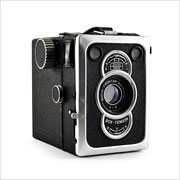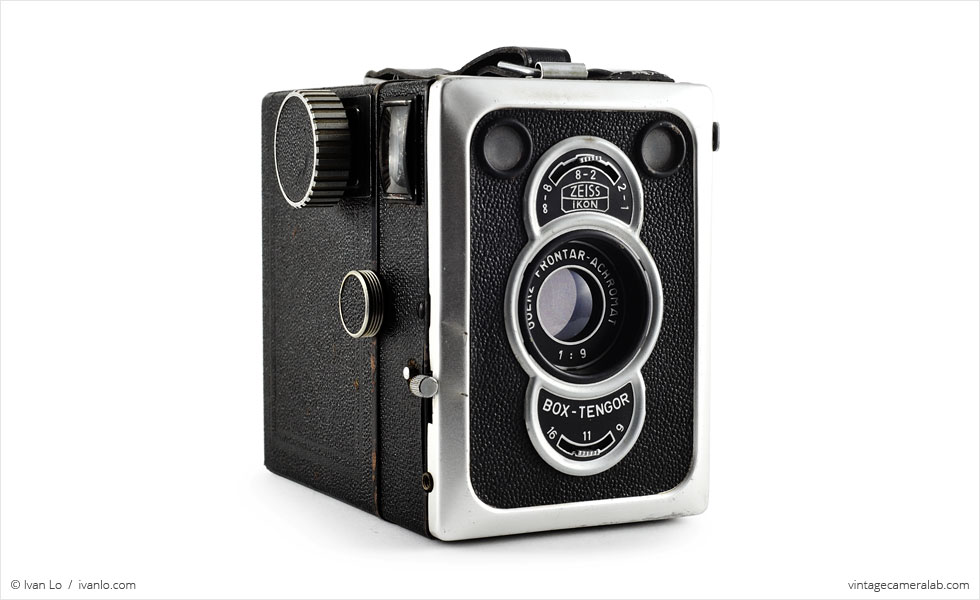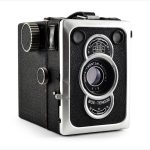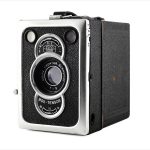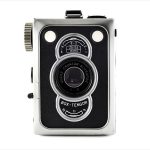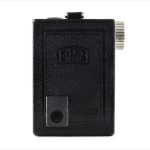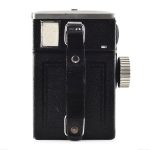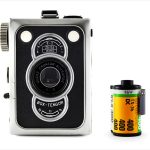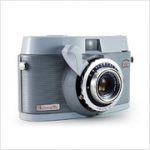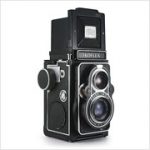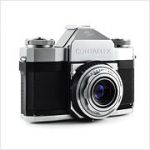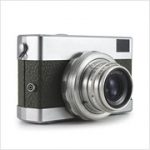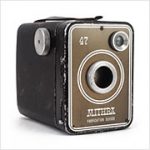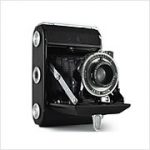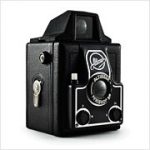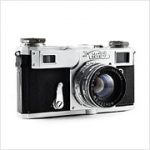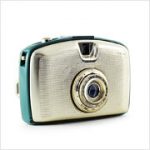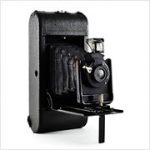Zeiss Ikon Box Tengor (56/2) Specifications
| Manufacturer: | Zeiss Ikon AG |
| Origin: | Germany |
| Made in: | Stuttgart, Germany |
| Introduced: | 1948 |
| Type: | Box, Viewfinder |
| Format: | 120 Film |
| Dimensions: | 7.4 x 10.5 x 11.5 cm |
Zeiss Ikon Box Tengor (56/2) Overview
The Zeiss Ikon Box Tengor (56/2) is a well-built and relatively advanced box camera (regarded by some as “the king of box cameras”) introduced by Zeiss Ikon shortly after the end of World War II and the subsequent division of Germany. The Zeiss Ikon Box Tengor line is a continuation of the original Box Tengor series manufactured by Goerz before it merged with ICA, Ernemann and Contessa-Nettel to form Zeiss Ikon in 1926. The 56/2 is the final camera to bear the Box Tengor name.
While most box cameras feature fixed apertures and fixed focus lenses, the Box Tengor has no such restrictions. The Goerz Frontar-Achromat lens has three aperture settings: f/9, f/11, and f/16 which can be set underneath the lens. Three preset focus zones are also available: one to two meters, two to eight meters, and infinity to eight meters which can be set above the lens. The user’s right-hand side of the camera features a large film winding knob, a smaller knob that unlocks the back of the camera for loading and unloading film, and a landscape orientation viewfinder window. Also located on that side is a shutter lock to prevent accidental exposures, the shutter lever, and below the shutter lever, a threaded socket for a cable release. The user’s left-hand side features a shutter speed selector (‘M’ for 1/30 seconds and ‘T’ for Time) near the top and a flash sync socket near the bottom. The top features the portrait orientation viewfinder window, a leather handle, and a double exposure prevention indicator. There’s a closeable red window on the back and a tripod socket on the bottom.
Compared to the vast majority of box cameras, the Box Tengor is pretty sophisticated. The Zeiss features a double exposure prevention system that locks the shutter until you to advance the film. The little window on the top of the camera shows white until you advance the film, then it turns red and unlocks the shutter for the next exposure. Then when you fire the shutter again, the window automatically shows white again.
I bought this Box Tengor through an eBay auction for approximately $25 shipped from Germany. It’s in perfect working order and good cosmetic condition with the only notable flaws being some brassing and rust on the metal bits and a couple of dents and a gouge on the silver trim. There’s also a label on the inside that shows that this camera was at some point sold by a business called Fotohaus Steins at Hohe Straße 117 in Cologne, Germany. Unfortunately, I looked up the address and it’s a shoe store now.
Find your very own Zeiss Ikon Box Tengor (56/2) on eBay.
McKeown, James M. and Joan C. McKeown’s Price Guide to Antique and Classic Cameras, 2001-2002. (Grantsburg, WI, USA: Centennial Photo Service, 2001), p 711.
